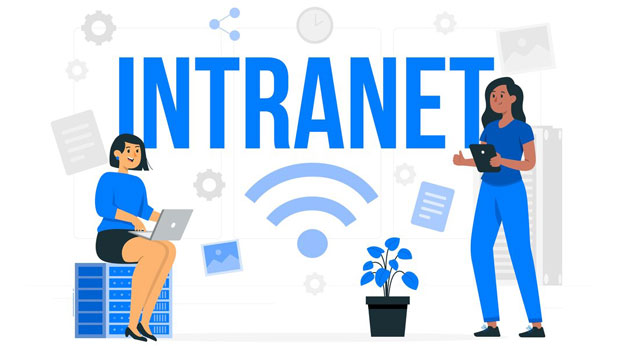In today's digital age, businesses and individuals are increasingly relying on proxies to manage network traffic and enhance online privacy. A smart proxy server, capable of switching between multiple protocols, offers a versatile solution to handle various types of traffic. This proxy flexibility allows for seamless switching between different communication protocols, such as HTTP, HTTPS, SOCKS, and others, depending on the specific use case or network environment. This article will explore how to implement multi-protocol proxy switching using a smart proxy server, discussing its benefits, technical considerations, and practical steps for achieving a robust and secure setup. Understanding the Concept of a Smart Proxy ServerA smart proxy server is a type of proxy that intelligently manages and routes network traffic according to the protocols and requests it receives. Unlike traditional proxies that may only handle a single type of traffic (e.g., HTTP or HTTPS), a smart proxy server can switch between various protocols, such as HTTP, HTTPS, SOCKS, and more. This flexibility enables users to optimize their internet traffic for different needs, such as secure browsing, anonymous access, and network optimization.The core advantage of using a smart proxy server lies in its ability to dynamically select the best protocol based on the type of traffic, the security requirements, and the specific network environment. For example, a user may want to use HTTPS for secure browsing but may prefer SOCKS5 for accessing geo-restricted content or maintaining anonymity. A smart proxy server can easily switch between these protocols without requiring manual intervention. The Benefits of Multi-Protocol Proxy Switching1. Enhanced Security and Privacy One of the primary benefits of multi-protocol proxy switching is increased security and privacy. Different protocols offer varying levels of encryption and anonymity. By utilizing multiple protocols, users can select the one that best suits their security requirements. For instance, HTTPS offers encryption for web traffic, while SOCKS5 provides greater anonymity by hiding the user's IP address.2. Network Optimization Multi-protocol proxy switching allows users to optimize their network performance. Different protocols can be more efficient for specific tasks. For example, HTTP is typically faster for standard web browsing, while SOCKS5 may be more suitable for applications that require low-latency connections, such as online gaming or video streaming.3. Bypassing Geo-Restrictions Geo-restrictions and firewalls often block certain types of traffic or restrict access to content based on geographical location. A smart proxy server can help users bypass these restrictions by switching to the appropriate protocol. SOCKS proxies, for instance, are commonly used to bypass geo-blocks and access content from restricted regions.4. Flexibility in Use Cases The ability to switch between multiple protocols gives users greater flexibility in managing their network traffic. Whether for accessing websites, streaming media, or engaging in secure communications, a smart proxy server ensures that the right protocol is used for the right situation. Technical Considerations for Multi-Protocol Proxy SwitchingWhen implementing multi-protocol proxy switching with a smart proxy server, there are several technical considerations to take into account.1. Protocol Compatibility Not all applications or websites support all types of protocols. When configuring a smart proxy server, it is important to ensure that the protocols being used are compatible with the target application or service. For example, while HTTPS is widely supported by web browsers, SOCKS may not be supported by all websites or services.2. Latency and Performance Each protocol has its own performance characteristics, and switching between protocols can introduce some latency. It is important to test and monitor the performance of different protocols to ensure that switching does not negatively impact the user experience, especially for latency-sensitive applications such as gaming or video streaming.3. Security Configurations While many protocols offer encryption and security features, they also come with different configurations. For instance, sock s5 proxies can offer a higher degree of anonymity, but they may not provide the same level of encryption as HTTPS. It's essential to configure the smart proxy server to switch between protocols in a way that maintains the desired level of security.4. Load Balancing and Scalability As the number of users and the volume of traffic increases, the ability of the proxy server to handle multiple protocols and distribute traffic effectively becomes critical. Implementing load balancing strategies and ensuring the scalability of the proxy server will help maintain optimal performance as demand grows. Practical Steps for Implementing Multi-Protocol Proxy SwitchingTo set up a smart proxy server that can switch between multiple protocols, follow these practical steps:1. Choose the Right Proxy Server Software Select a proxy server software that supports multi-protocol functionality. There are various commercial and open-source proxy solutions available that offer the ability to switch between protocols. Ensure that the software you choose is compatible with your network environment and supports the protocols you need.2. Configure the Proxy Server for Multi-Protocol Support After installing the proxy server software, configure it to support the desired protocols. This may involve setting up separate proxy instances for HTTP, HTTPS, SOCKS, and other protocols, as well as specifying rules for when to switch between them. For example, you can configure the proxy to use HTTPS for secure web browsing and SOCKS for bypassing geo-restrictions.3. Integrate with Network Applications Once the proxy server is configured, integrate it with your network applications. This may involve configuring web browsers, email clients, or other software to use the proxy server. Depending on the application, you may need to specify the protocol to use or let the proxy server automatically determine the best protocol.4. Monitor and Optimize After the setup is complete, it's important to monitor the performance of the proxy server and ensure that it is switching between protocols effectively. Regular monitoring will help identify any issues, such as slow performance or security vulnerabilities, that may arise during operation. Optimize the configuration as needed to maintain a smooth and secure user experience. ConclusionMulti-protocol proxy switching with a smart proxy server offers a powerful solution for managing network traffic and enhancing privacy and security. By leveraging different protocols for different use cases, users can optimize their online experience while maintaining flexibility, security, and performance. Whether for secure browsing, bypassing geo-restrictions, or improving network efficiency, implementing a smart proxy server that supports multi-protocol switching is a valuable strategy for both businesses and individuals. Proper configuration, monitoring, and optimization are key to ensuring the success of this approach.
Jul 16, 2025



































































